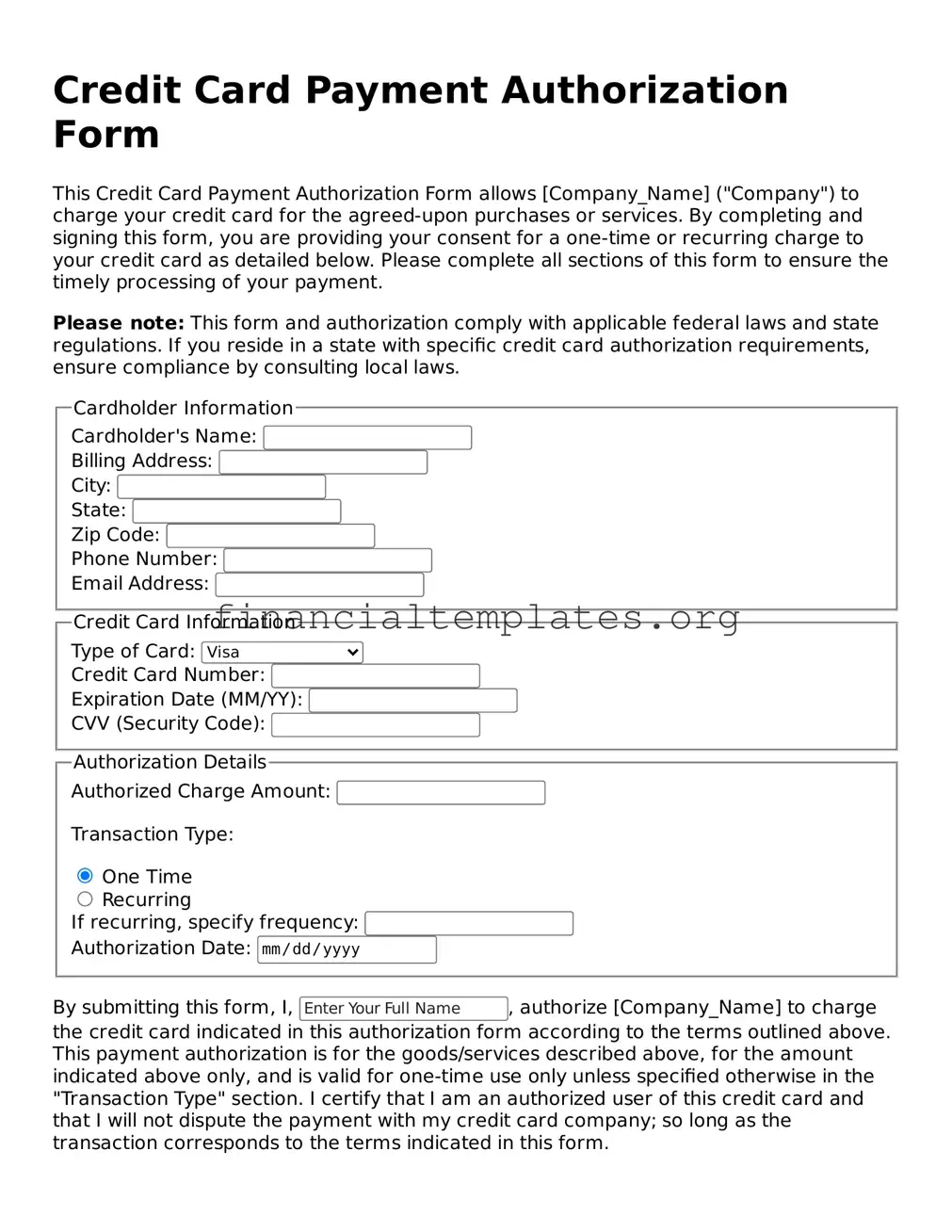A Direct Debit Authorization form is notably similar to the Credit Card Payment Authorization form. Both serve the purpose of granting permission to withdraw funds from an individual's bank account automatically. While the Credit Card Payment Authorization form focuses specifically on credit card accounts, the Direct Debit Authorization concerns itself more broadly with any bank account. They offer a convenient method for recurring payments, reducing the hassle of manual submissions for each transaction.
Standing Order forms share a common objective with the Credit Card Payment Authorization form: they both authorize regular, automatic payments from an account. The key distinction lies in their operational scope; standing orders are primarily used for bank-to-bank transfers. This contrasts with the credit card form, which is dedicated to authorizing charges to a credit card by a third party. Standing Order forms are particularly popular for domestic bill payments, such as utilities or rent.
The Automated Clearing House (ACH) Authorization form is another document that parallels the Credit Card Payment Authorization form. It gives permission for companies to electronically withdraw money from a bank account or deposit money into it. The ACH network handles transactions such as payroll deposits and bill payments, similar to the automated nature of credit card transactions authorized by the Credit Card Payment Authorization form. However, ACH transactions can be more cost-effective for businesses compared to credit card processing fees.
A Loan Agreement is akin to the Credit Card Payment Authorization form in that both involve an agreement to financial terms between parties. In a Loan Agreement, the borrower commits to paying back a specified amount of money over time. The parallels lie in the authorization aspect, where the Credit Card Payment Authorization form also involves an agreement—albeit for the recurring or one-time charge to a cardholder’s account. Both documents formalize the terms under which money changes hands.
Payment Plan Agreements and Credit Card Payment Authorization forms share a foundation in setting up structured payments. Payment Plan Agreements are often used to outline a series of payments over time for goods or services, which resembles the recurring payment feature of the credit card authorization. Though the mechanics differ—payment plans don't necessarily require a credit card—the essence of allowing staggered payments over a period is a common thread.
A Merchant Services Agreement is closely related to the concept behind the Credit Card Payment Authorization form. This agreement is between merchants and payment processors or banks, outlining the terms under which transactions are processed, including fees, service terms, and dispute resolution processes. The Credit Card Payment Authorization form is a microcosm of this larger arrangement, empowering the actual charge on a customer’s credit card that the Merchant Services Agreement facilitates on a broader level.
Lastly, a Subscription Agreement mirrors the repetitive payment feature inherent in the Credit Card Payment Authorization form but in the realm of investment. It's a contract between an investor and a company, detailing the investor's purchase of a portion of the company's shares. Like the Credit Card Payment Authorization, it involves agreeing to financial transactions over time—albeit, in this case, the transaction is an investment rather than a payment for goods or services.
